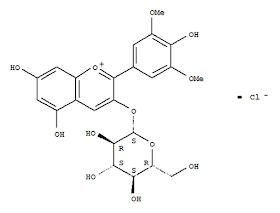Antonio Galloni's 2010 Brunello di Montalcino Tasting
Antonio Galloni's Vinous builds community with subscribers through Vinous Events which are targeted at "fostering dialog and education through once-in-a-lifetime seminars, tastings and dinners." One such event was a tasting of 2010 Brunello di Montalcinos held at New York's Lincoln Ristorante on Tuesday, September 29, 2015. This was a limited-seating event which promised "a comprehensive look at a number of the very best Brunellos from Montalcino's exceptional 2010 vintage" wherein the attendees would "taste the entire stylistic range ... from the super-classic to the ultra-modern" paired with offerings from Chef Jonathon Benno of the Lincoln in the unparalleled setting of the restaurant's East Dining Room. A graphic of the wines tasted is presented below.
Highlights of the tasting were as follows:
- The Il Poggione was traditionally made and, according to Antonio, is the single wine that offers the highest value for money in Montalcino and brings together a lot of things that are characteristic of Italy.
- The Salicutti was stunning. An almost Burgundian expresssion of Sangiovese. Powerful, intense, and long without being heavy. Great tannic structure and perfect weight on the palate. Can be drunk now but will also reward patience.
- The Pian dell'Orino was also stunning. An explosion of flavor and intensity. This wine was constructed using traditional methods and was the best wine tasted up to that time.
- The Cerbaiona was the best of the wines on display that night endowed as it was with finesse, elegance, layered complexity, and a wonderful balance.
This tasting exceeded the expectations that had been set at the time of the offer. My disappointments were twofold: (i) I did not get there early enough to mingle and so did not have an opportunity to assess the quality and interests of the attendees beyond my table mates (who were fantastic, by the way) and (ii) that Soldera and Poggio di Soto were not among the wines tasted (The quality and excellence of the tasting were not diminished by their absence but I just felt that they belonged in this company.)
Penfolds Pinnacle of Australian Wine Tasting at Pebble Beach Food and Wine
- Greg Harrington MS, Founder and Winemaker, Gramercy Cellars
- Ray Isle, Executive Wine Editor, Food & Wine
- Kim Beto, Vice President of Key Accounts, Southern Wine and Spirits of Northern California.
The 1998 exhibited notes of spice, leather, tobacco, smoked meat, burnt toffee, chocolate, and mint. On the palate a savoriness and surprising youth. Intense, bright, some salinity, spiciness, and slightly grippy tannins. Long, spicy finish. According to DLynn, 2.4% Cabernet Sauvignon included. The nose on the 2009 was unyielding. Slight vegetality. Weighty on the palate with a great core of fruit. Intense. Eucalyptus notes. It is not as structured as the 1998 but a beautiful wine nonetheless.
The 1997 RWT had a layered complexity with a perfumed nose and accompanying notes of eucalyptus, mint, earth, spice, and dried tree bark. Delivers on the palate but not on the promise of the nose. Rich and powerful with blackberry, cedar, and truffles dominant. Long, drying finish. The 2012 RWT had a core of blackberry fruit supporting notes of dark chocolate, soy, and mahagony. Concentrated fruit on the palate along with a saline character. Balanced by appropriate tannin structure and acidity. Lengthy finish.
Magill Estate is a 5.1 ha property and is, according to DLynn, the spiritual home of Penfolds. The wine is 100% Shiraz and the 2004 exhibited notes of green bark, coconut, petrol, smoke, charcoal, and toffee along with a hint of phenolics. On the palate elegant and balanced with a drying finish. The 2012 was more "in your face" than was the 2004. Same nose as for the 2004 but with more intensity. Dark fruits and brightness on the palate.
I had tasted the 1986 as a part of our Five Decades of Penfolds Grange tasting and had described it as having aromas of dill, bay leaf, thyme, phenolics and a little greenness. I had also described it as balanced and savory and having integrated tannins and a long finish. Similar characteristics exhibited at this tasting except for a hint of portiness that I had not evidenced previously.
The 1989 wine had also been tasted earlier and in that case I described it as having ripe fruit, molasses, savoriness, beef broth with dark fruit and molasses on the palate. The notes for this tasting aligned somewhat in that I evidenced an aromatic high tone along with pyrazine, sugar cane, and molasses on the nose to go along with dark fruit, pyrazine, and molasses on the palate.
The 1998 had rich, dark, ripe fruit along with baking spices and pepper on the nose. Palate-filling. Rich and concentrated with a long creamy finish. Hint of port.
The 2008 was perfumed on the nose with baby talcum powder, sawdust, chocolate dust, and cocoa dust. Elegant on the palate with sweet ripe fruit and a hint of green. Toffee, coffee, chocolate, and a long smooth finish.
The 2010 also exhibited an elegant nose. On the palate thick, rich dark fruit. As Yogi Berra would have said, "Its future is ahead of it."
All in all this was a fun tasting. Dlynn and Greg made stellar contributions to the affair with DLynn being "always on" and Greg having taken the necessary steps to be prepared for the event.












































